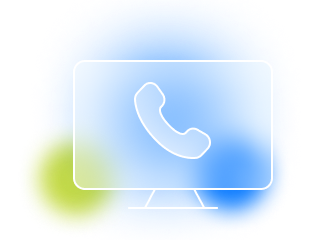If the COVID-19 pandemic proved anything, it is that modern technology sets the foundation for the innovation needed to navigate modern issues. There are many repercussions of the pandemic. But one of the areas that was impacted the most was education. Both children and adults were affected by the efforts to navigate this crisis. Implementing educational technology could vastly alter the course of your teaching capabilities and your students’ learning methods.
Technology should and will play an essential role in education as the world moves forward. Not only will students need to know how to use educational technology in their academic and professional careers. They will most likely utilize it in the new educational environments that were created by COVID-19.
If you are a school administrator, you undoubtedly would like to research the role that technology will play in your institution. Let’s review the potential advantages and disadvantages of integrating educational technology into the learning process. You will see how you can start making the necessary changes.

Why Introduce Students to Technology? Advantages and Disadvantages
Technology is often viewed as relatively new due to its introduction and growth over just the past few decades. At the turn of the century, educators may have had difficulty integrating technological advancements into the classroom. But today’s tech can be easily leveraged for an improved learning experience.
The question for many administrators is not necessarily about which educational technology to use. It’s important also to weigh the advantages and disadvantages of shifting from traditional learning methods to more modern practices. Let’s take a look at some of the pros and cons of making such a change and why you should turn your focus toward tech moving forward.
6 Advantages of Using Educational Technology in the Classroom
1. Provides Students With the Skills They Need to Navigate Today’s Digital World
Some teachers and institutions may be hesitant to implement educational technology in their curriculum. But the truth is that the world we live in today is a digital one. As such, it is important that students learn how to use the technology they will rely on as they further their education and enter the workforce. By implementing educational technology in the classroom, you allow them to interact with the tools that will help them build their futures.
2. Connects Students With Real-Time, Accessible Information
The world around us constantly undergoes change. However, the information provided in textbooks is not updated actively at the same pace. The right educational technology allows students to access real-time information that can further build upon their current curriculum. This would not be possible through the use of traditional teaching resources.
3. Automates Time-Consuming Processes for Teachers
Educational technology isn’t only beneficial for your students but for your staff as well. Through various programs, teachers will be able to grade assignments with ease. They can analyze where students may be struggling. And teachers will also gain access to data and performance metrics that can improve the way students learn. This helps foster an improved learning environment that is beneficial for all.
4. Makes It Easier for Students and Teachers to Connect and Collaborate
In-classroom engagement is relatively easy as it is now. However, allowing students to connect and collaborate on projects together outside of the classroom can be difficult. (This is especially so if there is no classroom environment available). Educational technology can break down barriers. It can allow teachers and students to connect seamlessly and collaborate on school projects with ease, no matter the setting.
5. Makes Learning More Fun and Engaging for All Students
Technology can be far more engaging for students than traditional pen and paper. You can use technology to utilize certain learning programs. You can also create tests that include embedded media. For example, choosing to create a technology-based learning environment may just be the catalyst for better learning.
6. Eliminates Costs of Running a Traditional Classroom
Pens, paper, and other classroom supplies come out of the school’s budget (and sometimes the budget of individual teachers). You have to make a large initial investment in the technology that you purchase. But you can balance these costs over time by making the switch to digital learning and eliminating physical goods.
Disadvantages of Using Technology in the Classroom
1. Some Students May Become Distracted By Their Devices
The biggest concern that prevents administrators from creating a more tech-friendly learning environment is the belief that students may become distracted. While this can be a concern, you can also take steps to mitigate these risks. Using mobile device management programs allows teachers to oversee the proper use of school-based devices.
2. Technology May Result in Decreased Socialization
Some educators worry that an increase in the use of educational technology will be accompanied by decreased opportunities for socialization. This can be another potential issue in the classroom. However, limiting how much time students spend online will allow you to create more opportunities for face-to-face interaction as your staff becomes more accustomed to these resources.
3. Not All Students Have Access to the Same Resources
Technology is readily available, but that does not mean that technology is readily accessible. Some students may not have the same access to technology at home as they do at school. This can be a major barrier in regards to advancing their education with EduTech.
4. Students Spend a Significant Amount of Time in Front of a Screen
Issues caused by excessive exposure to blue light and technology are very real. As it is now, students receive only exposure to devices at home or those that they use during breaks. However, the transition to educational technology in the classroom means that they will be spending the majority of their day staring at devices to learn.
5. Both Teachers and Students Must Learn How to Use Programs and Devices
Technology can be fast and efficient, But it requires that both students and teachers become accustomed to it to reap these benefits. Training your staff and ensuring that your staff can train their students is often another area of concern for educators.
The most important question to ask yourself regarding the above pros and cons is this: do any of the potential disadvantages outweigh the benefits that my staff and their students will gain? Most often, the answer is a resounding “no”. In fact, you can circumvent many of the above disadvantages with the right plan. But how are you supposed to navigate this integration successfully?

Implementing Educational Technology in the Classroom
When seeking technology for the classroom, educators focus on ensuring that the solutions allow full control over the learning experience. Fortunately, there are excellent solutions available that provide educators with the tools they need to control and enhance the digital learning experience. Radix TeacherView is one such solution.
Radix TeacherView is an innovative classroom management solution. It gives educators access to the tools they need to create an engaging, efficient distance learning experience. You can employ TeacherView in both in-person and remote learning environments. TeacherView grants you the ability to:
- Share your screen, video camera, and whiteboard with students as you lecture or collaborate with them.
- Engage with all students in real-time, virtually walking between each one as you teach.
- Allow students to virtually raise their hands, giving you the ability to provide them with discreet one-on-one assistance.
- Launch apps, media, and other programs for the entire class to provide a synchronized experience.
- Control remote devices while restricting access to certain apps or websites and monitor students’ screens.
With the support of a platform like TeacherView, your staff will have full control over the learning experience. It will grant them the ability to navigate whatever may come, both inside and outside the classroom. If you see the value in educational technology and want to begin making the transition in your institution, use the list above as an incentive to learn more about solutions like Radix TeacherView for your educational needs.
Additional reference
You can learn more about how to encourage STEM in the early educational years here.





